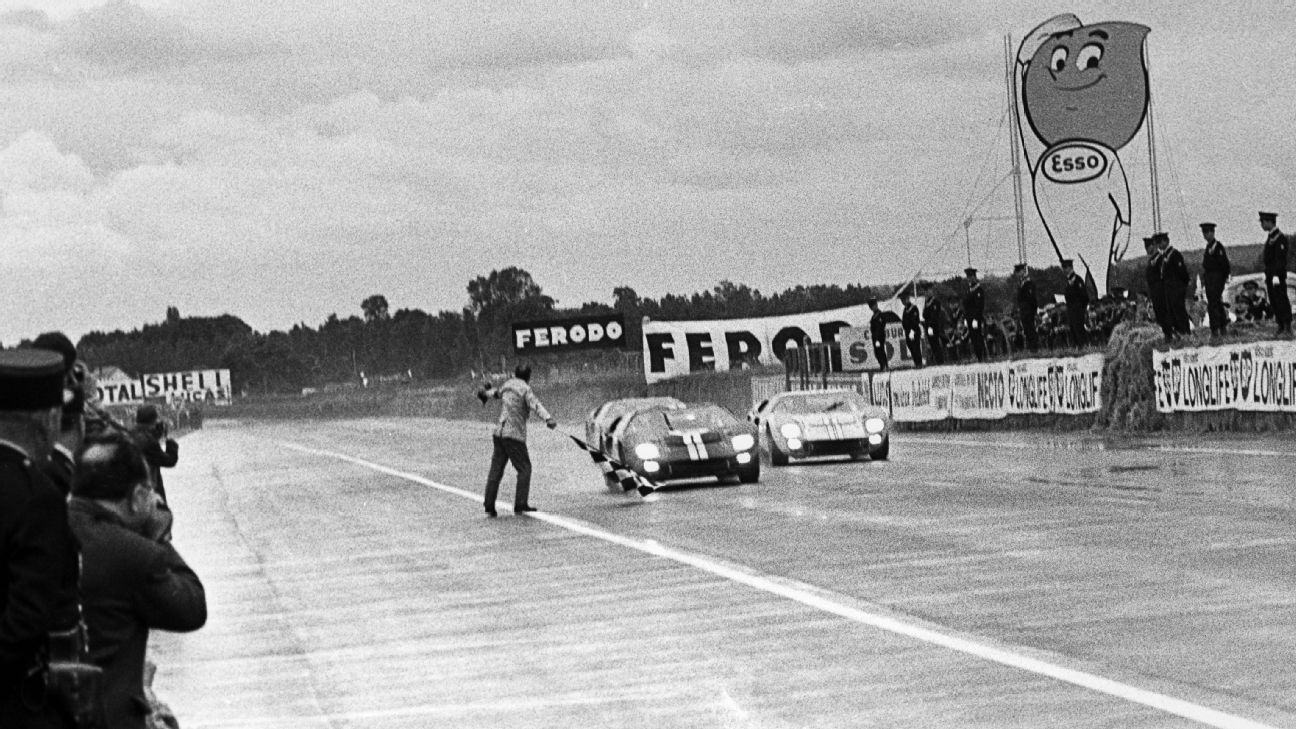James Mangold’s latest movie is variously titled ‘Ford v Ferrari’ or ‘Le Mans ’66’, depending in which part of the world you live. But it really ought to be called ‘The Untold Story of Ken Miles’. Such a title isn’t box office but, in the case of this rather long epic, it would be timely. Miles, a taciturn Englishman resident in California, has always been the unsung hero behind making the Ford GT40 MkII competitive in readiness for battle against Ferrari, culminating in the famous 1-2-3 at Le Mans in 1966.
There’s very little — if any — archive footage of Miles being interviewed but Christian Bale has clearly gone to great lengths when preparing to portray such a prickly character. It’s difficult to judge whether or not his resulting accent is true to type, but it contains enough inflections to cover Miles’s upbringing in Birmingham and depict a likeable rogue.
Matt Damon plays Carroll Shelby, the tough Texan who enhanced his engineering reputation when he put a trim AC Ace on steroids by cramming a meaty V8 under the bonnet — sorry, ‘hood’ — and calling it an AC Cobra. This, coupled with Shelby’s experience as a handy driver, allowed a full appreciation of Miles’s all-round skill. When Ford’s corporate correctness bridled at the Englishman’s brutal honesty, Shelby went in to bat on Ken’s behalf. Apart from the main theme of Ford taking on Ferrari, this juxtaposition of opposing and mutually admiring characters provides the thread of bromance needed to attract a non-racing audience.
Inevitably, there are further injections of ‘Hollywood’ — for example, a grappling match between Miles and Shelby on a suburban pavement — which may or may not be true. But that doesn’t matter. More important is the depiction of racing and the trouble taken to produce dramatically effective scenes, notably racing on the Mulsanne Straight at night, in teeming rain.
Racing anoraks will point to small technical anomalies, most of which are irrelevant but some, such as shifting down a gear to overtake on Mulsanne, or Miles locked in a mean staring contest with Lorenzo Bandini as they race side by side at 170+ mph, will make you cringe. Overall, though, the cinematography and production are of a very high standard, the Le Mans pits (recreated in fine detail on an abandoned airfield in California) being outstanding, particularly when coupled with the incredibly realistic effect of a packed spectator enclosure opposite.
The story line, heavily in favour of Ford, does not miss the opportunity for emotion when Miles is denied a well-deserved Le Mans win that would have brought him a unique treble with Daytona and Sebring. Ford’s demand for a photo-opportunity dead heat (to which Miles, with uncharacteristic benevolence, had agreed) actually gave victory to Bruce McLaren and Chris Amon because their car was deemed by race officials to have travelled an extra 20 metres thanks to being further back from the Miles/Denny Hulme MkII in the starting order.
That much is known. What has never been made clear is the reason for the fatal crash at Riverside two months later when Miles was testing the J-type (later to become the Mk IV) in preparation for 1967. Thankfully shunning the opportunity to stage another spectacular crash, the film uses a long shot to show the car running wide on a fast curve and disappearing in a cloud of dust, the implication being that Miles had made a mistake.
In reality the car barrel-rolled several times, Miles suffering grievous injuries when he was flung from the cavorting machine during this massive accident. There have been differing theories, ranging from a revised seat harness coming loose, to flawed aerodynamics at high speed.
In which case, it’s worth recounting the experience of the late Frank Gardner, a highly competent racer respected by Ford and hired to find out what had gone wrong. Over lunch in Sydney one day, Gardner told us he walked the Californian track beforehand, checking out where he could try and place the car in the event of trouble. The J-type, he explained, was one of the first to have a ‘black box’ influencing, among other things, a semi-automatic transmission.
Gardner replicated Miles’s test, right down to lap speeds and time of day. At virtually the same distance into the test, and at the same point on the race track, the transmission locked. The difference was that Gardner was ready for it and Miles was not.
Frank considered himself very lucky to have been able to bale out and avoid serious injury. The trajectory matched lurid tyre marks left by Miles’s car. This, you might say, is the only black mark at the end of motor racing movie in which the backstory of Ken Miles is as worthy as the main theme.
